Traditional literature includes stories that have been passed down over time. There are different genres, or types, of these tales, including folktales, fables, legends, myths, and tall tales.
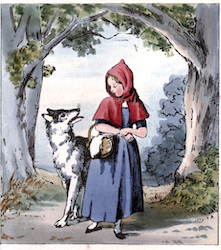
FOLKTALES are traditional stories that were originally passed down by word of mouth. The characters in folktales could be human and/or magical creatures and animals that can talk. Folktales are set in the vague, distant past, often in imaginary worlds of enchantment. Fairy tales are a type of folktale. The conflicts are usually good vs. evil, with usually happy endings. Rhythmic repetition of words and actions—often in groups of three—are common, with a build-up of intensity each time. This serves to build tension in the story. Examples of folktales are The Three Little Pigs, Little Red Riding Hood, and Goldilocks and the Three Bears.
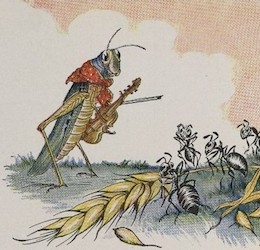
FABLES are short tales with morals, or life lessons, that are usually stated at the end. The characters in fables are often animals that talk and act like humans. Throughout the events in the stories, the animals learn lessons that are meant to be generalized, or applied to different, but related, situations in our own lives. The most commonly recognized fables are those attributed to an ancient Greek storyteller named Aesop. Though they have been told and retold by many different writers over time, they are generally known as Aesop's Fables. Examples include "The Tortoise and the Hare" and "The Ants and the Grasshopper."
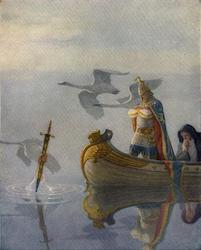
LEGENDS are stories based on real historical figures and events. However, the "facts" have changed over time such that the characters' personalities and deeds have become exaggerated, more vivid and colorful than reality. The historical significance of certain events may also be exaggerated. Though the settings in time and place are real, and the characters are believed to have been real people, legends are only considered "semi-true." Examples of legends are stories about Davy Crockett and his "last stand" at the Alamo and stories of King Arthur, a medieval king who pulled the sword Excalibur from a stone to become King of the Britons and who lived in a castle called Camelot.
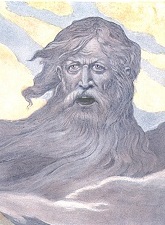
MYTHS are ancient stories about gods and goddesses. Other characters may include creatures with supernatural forms and powers and humans who interact with these creatures and the gods. The settings in myths are imaginary worlds with elements of the real world of the lands and cultures in which the stories originated. The stories were meant to explain the natural and cultural realities of the world in which the people lived. Myths are tied to the religious beliefs of many ancient cultures. Examples of myths come from all cultures, including stories of gods like Zeus and Athena from Greek mythology and stories of the thunder god Thor and the sea god Aegir from Norse mythology.
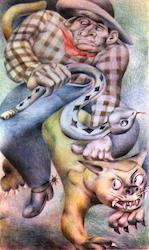
TALL TALES are traditional American stories that originated in the last few centuries, mostly in the 1800s. These stories have realistic settings and somewhat realistic characters, but the exaggeration, or hyperbole, is "over-the-top" and unbelievable. The stories describe great feats of strength performed by exaggerated examples of the regular people who worked hard to build the nation. The main character in a tall tale is often assisted by a trusty and powerful object or animal. Tall tales often provide funny explanations for how natural land features like the Grand Canyon or the Great Lakes were formed. Examples of tall tales are stories of the the lumberjack Paul Bunyan and the Texas cowboy Pecos Bill.
❋ ❋ ❋ ❋ ❋ ❋ ❋ ❋ ❋ ❋ ❋ ❋ ❋ ❋ ❋ ❋ ❋ ❋ ❋ ❋ ❋ ❋ ❋ ❋ ❋ ❋ ❋ ❋ ❋ ❋ | Go to the next page to test your knowledge of traditional literature. |


 4th Grade Reading - Traditional Literary Genres Lesson
4th Grade Reading - Traditional Literary Genres Lesson








